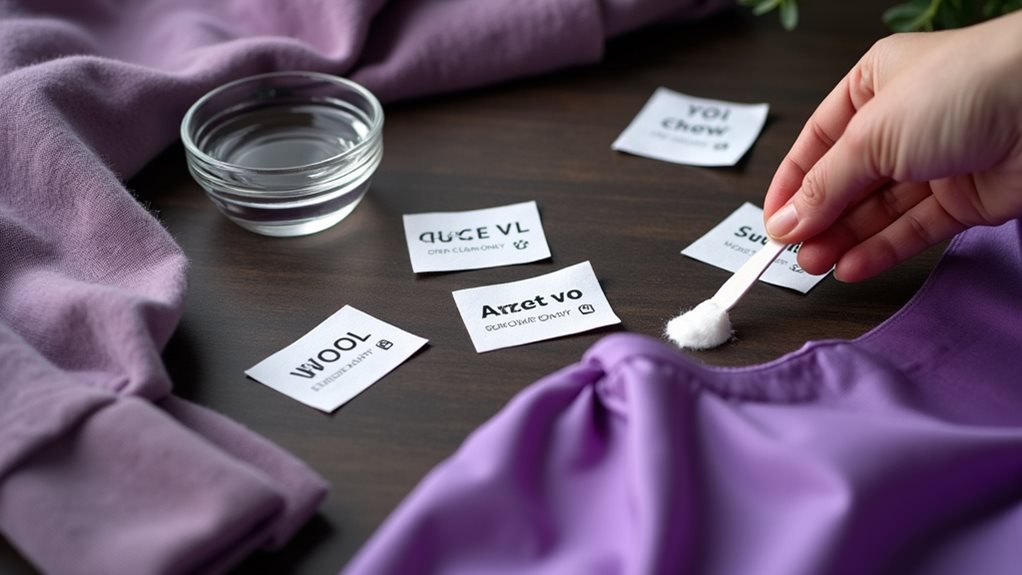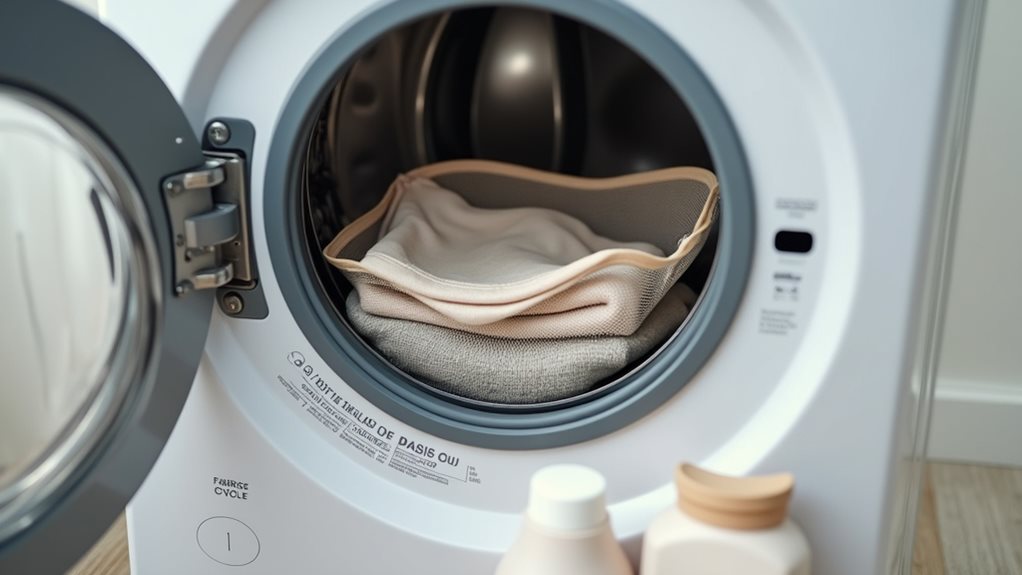You can absolutely wash most “dry clean only” items at home, and I’ve saved hundreds doing exactly that! Start by checking care labels for those telltale circles that mean professional cleaning only, then test colorfastness with a damp Q-tip in an inconspicuous spot. Cotton, polyester, and even some wool blends handle gentle machine cycles beautifully, while silk responds well to careful hand washing in cool water. The key lies in understanding which techniques work best for your specific garments.
Which Fabrics Can Safely Skip Professional Cleaning
Why spend a fortune on dry cleaning when many of your favorite fabrics can handle a gentle home wash just fine?
Cotton, linen, and polyester are your washing machine’s best friends – they’re durable enough to handle regular cycles without throwing tantrums.
Modern wool blends have come a long way too, though I’d still check those vintage sweaters carefully before tossing them in.
Nylon and acrylic garments perform beautifully with washing at home, especially activewear that needs frequent cleaning.
Even silk can work if you hand wash gently and test for colorfastness first.
The secret lies in using mild detergent, choosing the delicate cycle, and monitoring water temperature closely.
Most tagged items will surprise you with their resilience!
Remember that home washing excels at removing water-based stains, while oil-based stains typically require the chemical solvents used in professional dry cleaning.
Reading Care Labels and Testing for Colorfastness

Before you even think about challenging that intimidating “dry clean only” label, you’ll need to become a detective armed with nothing more than a magnifying glass and a healthy dose of curiosity.
Your care label holds all the secrets – look for washing machine icons, hand-washing symbols, or that dreaded circle that screams professional cleaning only.
Once you’ve decoded these hieroglyphics, it’s time for the colorfastness test, which honestly feels like performing surgery on your favorite shirt 😅.
Grab a Q-tip, dampen it with water, and dab an inconspicuous seam. If color bleeds onto your white cloth, those delicate materials aren’t ready for home washing methods.
Always test first – trust me, I’ve learned this lesson the expensive way with several ruined items.
Keep in mind that items with sequins or beads may be damaged by dry cleaning chemicals, so home washing might actually be the safer option for these embellished garments.
Hand Washing Techniques for Delicate Items

When you’ve determined that your delicate item can handle some gentle home care, hand washing becomes your most reliable ally in the battle against expensive dry cleaning bills.
I’ve learned through countless silk blouse mishaps that cool water paired with gentle detergent designed for delicate items works absolute magic. Fill your basin, add your detergent, then let your garment soak for up to thirty minutes—think of it as a spa day for your clothes! 😊
Gently swish the water around, but resist the urge to wring or twist. After a thorough rinse, press out excess water and flat dry on a clean towel, reshaping as needed to prevent stretching and fading.
For particularly stubborn stains like sweat marks, hand washing with water-based treatments can be more effective than dry cleaning since perspiration stains are water-soluble and respond better to gentle detergents than chemical solvents.
Machine Washing Methods for At-Home Care

Although hand washing requires patience and tender care, machine washing opens up a world of convenience for those garments that can handle a bit more action. I’ve discovered that my washing machine has become my secret weapon against mounting dry cleaning expenses.
Before attempting dry cleaning at home, I always check care labels religiously—it’s like reading a textile science manual that saves me from costly mistakes!
For my delicate pieces, I use a protective Mesh Bag and select the delicate cycle with cold water, which keeps my clothes looking fresh without the harsh treatment.
I’ve learned to wash cycle through similar fabrics together, and this gentle approach has transformed how I wash your clothes at home. However, pre-washing delicate fabrics like silk or wool before dry cleaning can actually cause shrinkage or color bleeding that becomes permanent.
Proper Drying and Storage for Cleaned Garments

The aftermath of washing your precious garments feels like completing half a marathon—you’ve conquered the cleaning challenge, but now comes the equally essential finish line of proper drying and storage that determines whether your efforts will pay off in the long run.
After you’ve successfully avoided the dry cleaner, lay those delicate pieces flat on a clean towel to absorb excess water, gently reshaping them like you’re tucking in a sleepy child.
Never hang wet garments—trust me, I’ve learned this lesson the hard way with a favorite sweater that now resembles a tent 😅.
Once completely dry, store them in breathable bags at home, and remember to check regularly for damage while adding cedar blocks for protection.
For garments that absolutely cannot withstand water washing, consider eco-friendly dry cleaning methods that use biodegradable solvents as a more environmentally conscious alternative to traditional chemical processes.




